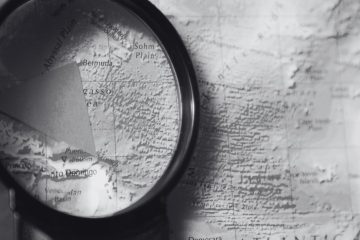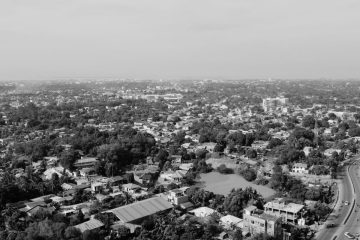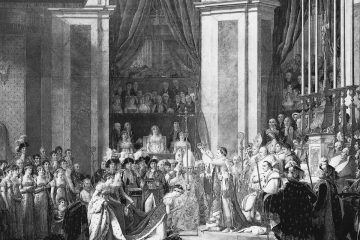What Happened On September 2nd?
On the morning of September 2, 1945, the USS Missouri anchored in Tokyo Bay and hosted one of the most significant moments in modern history. Japan, after years of relentless warfare, moved to surrender formally. At 8:55 AM, Japanese Foreign Minister Mamoru Shigemitsu, supported by a cane due to a war injury, stepped aboard the battleship alongside General Yoshijiro Umezu, Chief of the Army General Staff. The air on the ship was tense as they approached the table where the Instrument of Surrender awaited their signatures.
General Douglas MacArthur, the Supreme Commander for the Allied Powers, directed the ceremony with a determined demeanor. The Japanese delegates advanced slowly, each step deliberate. Shigemitsu paused briefly before signing the document that marked Japan’s submission. General Umezu followed, adding his name on behalf of the Japanese military. This act ended Japan’s imperial ambitions and brought the global conflict to a close.
The Instrument of Surrender, written in both English and Japanese, demanded Japan’s complete disarmament, renunciation of force, and acceptance of Allied occupation. These conditions reflected the devastation Japan had experienced, especially after the atomic bombings of Hiroshima and Nagasaki.
After the Japanese signed, Allied representatives stepped forward to confirm the surrender. General MacArthur signed first for the United States, followed by Fleet Admiral Chester Nimitz, representing the U.S. Navy. Representatives from China, the United Kingdom, the Soviet Union, Australia, Canada, France, the Netherlands, and New Zealand followed. Their signatures demonstrated the collective strength of the Allied forces that had overcome the Axis powers.
The USS Missouri served as a symbol of Allied naval superiority. The battleship had played a crucial role during the war, and its presence in Tokyo Bay underscored the overwhelming force that had compelled Japan’s surrender. As the ceremony unfolded on its deck, dignitaries and military leaders from around the world observed closely. Cameras captured the event and broadcast it globally, allowing people from all nations to witness the official end of a conflict that had devastated much of the world.
When the ceremony concluded, a mix of relief and solemn reflection settled over those present. The flags of the Allied nations fluttered in the breeze, representing the combined effort that had defeated Japan. The Japanese delegation, which represented a once-mighty empire, now stood in submission, closing an era of expansion and aggression.
Tokyo Bay, where Japan had once celebrated its rise as a power, now witnessed its final defeat. The USS Missouri, anchored in these waters, embodied the might of the Allied forces that had brought Japan to surrender.
British battleship HMS Duke of York, the Australian heavy cruiser HMAS Shropshire, and the Canadian destroyer HMCS Prince Robert stood alongside the Missouri, highlighting the global effort that had secured peace. The French battleship Richelieu, repaired after sustaining heavy damage earlier in the war, represented France’s resilience. The Richelieu had undergone repairs in an American shipyard, illustrating the cooperation between Allied nations during the war.
In contrast, Japanese warships, now disarmed and powerless, lay in the bay. Onboard these vessels, Japanese naval officers ordered their crews to stand at attention during the ceremony. This silent gesture of respect underscored the gravity of the moment. Among the Japanese ships, the Nagato, once the flagship of the Imperial Japanese Navy, lay silent, its guns cold, symbolizing the fall of Japan’s naval power.
For the Allied soldiers and leaders present, the ceremony represented a hard-earned victory. The war had exacted a tremendous toll, with millions of lives lost and entire cities reduced to ruins. The scene on the USS Missouri reminded everyone of the sacrifices made to achieve peace. Among the Allied officers present, Fleet Admiral William Halsey, commander of the U.S. Third Fleet, stood as a witness to Japan’s final submission. The USS New Jersey, Halsey’s flagship, had played a decisive role in the Pacific theater. The New Jersey had participated in bombardments of the Japanese home islands just weeks before the surrender, demonstrating the relentless pressure applied by the Allied forces.
Around the world, news of Japan’s surrender brought a mix of joy, relief, and mourning. In the United States, celebrations erupted as citizens flooded the streets, yet the jubilation came with the memory of those who had perished. In Europe, which still reeled from the war’s devastation, the surrender offered hope for a more peaceful future. In China, where the war had raged for over a decade, the end of Japan’s occupation marked the closure of a brutal chapter that had claimed millions of lives. In the Philippines, where the Japanese occupation had been particularly brutal, the news of surrender met with both relief and a deep sense of loss for those who had suffered.
After the signing, the Allied forces began the occupation of Japan. General MacArthur, now the Supreme Commander of the Allied Powers, started overseeing the demilitarization and democratization of the country. He ordered the cessation of Japanese military operations and the release of Allied prisoners of war. MacArthur’s presence in Tokyo, a first in history for a foreign army, signaled the profound changes ahead. Instead of focusing on punishment, MacArthur prioritized rebuilding and restructuring Japan’s government, setting the stage for its recovery. MacArthur’s approach included a significant shift in Japanese society, including the drafting of a new constitution inspired by the U.S. Constitution, which laid the foundation for Japan’s post-war democracy.
As part of the occupation strategy, Allied aircraft dropped leaflets across Japan, which informed the population of the surrender and instructed them to comply with occupation forces. These leaflets aimed to ensure a smooth transition by reducing fear and encouraging cooperation among the Japanese people. The leaflets, printed in both Japanese and English, also provided detailed instructions for disarmament and the handling of remaining military equipment.
In Tokyo, preparations for the arrival of Allied occupation forces moved forward. The Imperial Palace, a symbol of Japan’s ancient monarchy, remained untouched, but Emperor Hirohito’s role changed dramatically. Hirohito, who had remained a distant figure throughout the war, addressed his people directly, urging them to accept the surrender and cooperate with the occupying forces. His speech, broadcast nationwide, marked the first time that the Japanese public had heard their emperor’s voice. This speech, known as the “Jewel Voice Broadcast,” was carefully worded to maintain the emperor’s divine status while acknowledging Japan’s defeat.





